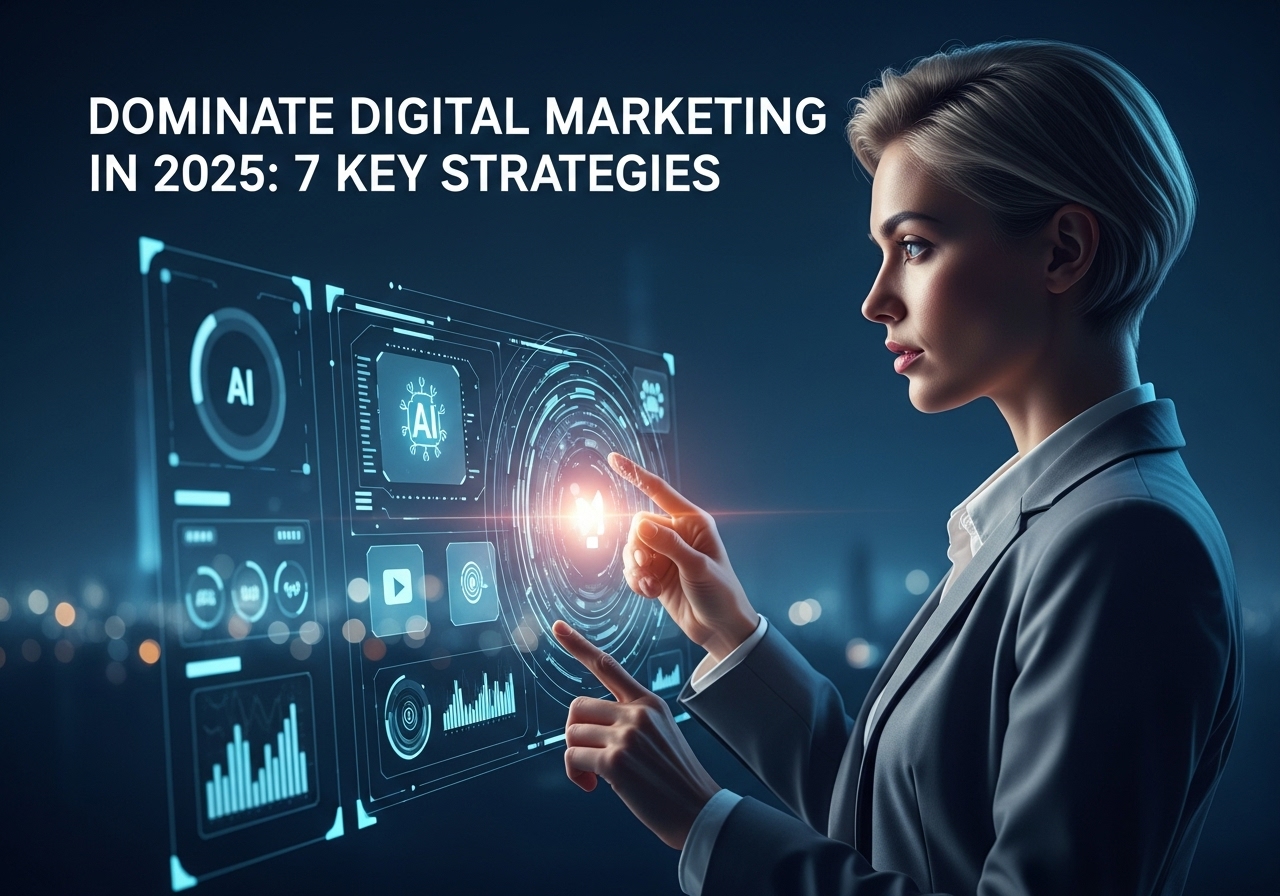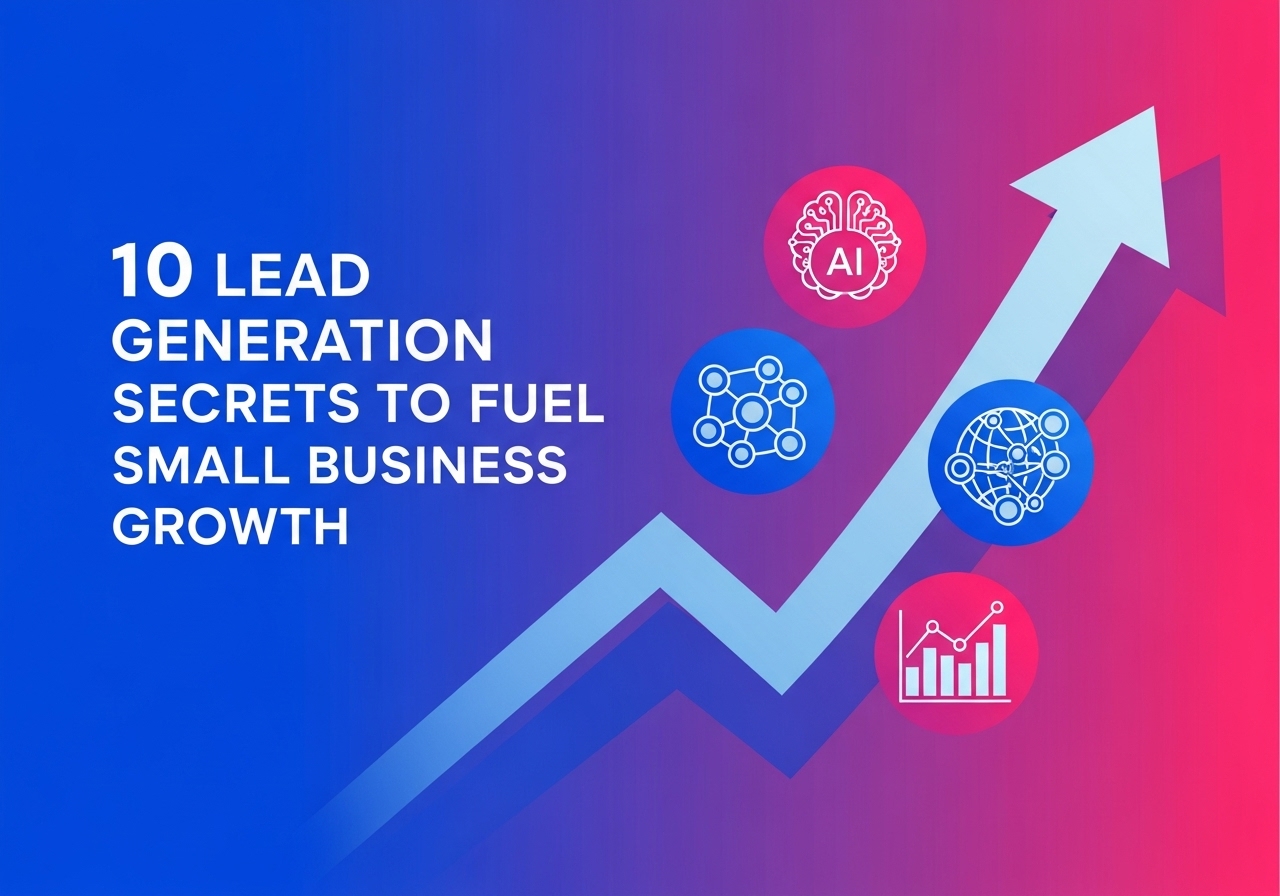In today’s hyper-competitive digital landscape, generating high-quality leads isn’t just important—it’s essential for business survival. As we navigate through 2025, the statistics speak volumes: 50% of marketers now consider lead generation their top priority in marketing campaigns, with organizations generating an average of 1,877 leads per month. However, here’s a shocking reality: a staggering 80% of new leads never translate into sales.
This disconnect between lead quantity and quality presents both a challenge and a significant opportunity for forward-thinking businesses. Indeed, with the lead generation industry projected to reach a colossal $3.7 billion by 2027, now is the critical time to refine your strategy and embrace the digital solutions that actually deliver results. For more insights, explore the CDM Suite blog.
The Evolving Landscape of Lead Generation in 2025
Quality Over Quantity: The New Gold Standard
The days of celebrating sheer lead volume are firmly behind us. In 2025, an overwhelming 70% of marketers prioritize high-quality leads over mere quantity. This fundamental shift clearly reflects a maturing approach to lead generation, focusing intently on attracting prospects with genuine buying potential rather than simply filling the top of the funnel.
Furthermore, high-quality leads not only convert at higher rates but also require less nurturing time and resources. Businesses that focus on nurturing leads generate 50% more sales while remarkably spending 33% less. This efficiency gain becomes particularly important considering that 59% of leads are still in the consideration phase and not prepared to buy when first captured.
The Rising Cost of Lead Acquisition
The mean cost per lead across all industries has reached $198.44, according to recent industry benchmarks. This significant investment underscores the crucial importance of maximizing conversion rates and optimizing lead generation channels. For comparison, webinar-generated leads cost substantially less at just $72 per lead, highlighting the immense value of strategic channel selection.
Consequently, with costs rising, businesses must be increasingly selective about where they allocate their lead generation budgets. This means abandoning outdated methods like cold calling, which has a dismal success rate of just 4.8%, in favor of more effective digital solutions.
AI-Powered Lead Generation: The Game Changer
Artificial intelligence has transformed from an experimental technology into an essential component of effective lead generation strategies. Currently, 63% of companies use AI for lead scoring and personalization, with 25% of marketing professionals identifying lead generation and qualification as the most effective AI applications in marketing automation.
Predictive Lead Scoring
AI algorithms can now analyze thousands of data points to predict which leads are most likely to convert. These systems continuously learn from customer interactions, becoming increasingly accurate over time. Therefore, by prioritizing high-potential prospects, sales teams can focus their efforts where they’ll have the greatest impact, rather than wasting time on leads that will never convert.
Hyper-Personalization at Scale
Personalization has become non-negotiable, with 94% of marketers reporting improved lead conversions through personalized approaches. AI enables this personalization at scale by:
- Analyzing customer behavior patterns to predict preferences
- Automatically segmenting audiences for targeted messaging
- Creating dynamically customized content based on user interactions
- Optimizing send times for maximum engagement
This level of personalization, previously impossible just a few years ago, is now accessible to businesses of all sizes through various AI-powered platforms and tools.
Conversational Marketing Automation
AI chatbots and virtual assistants have evolved beyond simple FAQ responders to become sophisticated lead qualification tools. These systems can engage website visitors in natural conversations, answer complex questions, and qualify leads 24/7 without human intervention.
Moreover, the impact of response time cannot be overstated—research consistently shows that leads contacted within minutes of initial inquiry are dramatically more likely to convert than those contacted hours later. AI-powered conversational tools ensure immediate engagement, capturing leads that might otherwise be lost.
Content Marketing: Still King for Lead Generation
Despite the technological advances, content remains the cornerstone of effective lead generation, with 76% of marketers using content to generate leads. However, the approach to content has evolved significantly.
Strategic Content Mapping
The most successful lead generation strategies now map content specifically to buyer journey stages. According to research, 54% of content marketers consider content that focuses on generating awareness and interest in the early stage to be the most valuable overall. This reflects the understanding that effective lead generation begins well before a prospect is ready to buy.
Content mapping involves creating different types of content for each stage:
- Awareness stage: Blog posts, infographics, and social content
- Consideration stage: Case studies, webinars, and comparison guides
- Decision stage: Product demos, free trials, and ROI calculators
The Power of Webinars
Webinars have emerged as a particularly potent lead generation tool, with 73% of B2B marketers confirming they are a top source of high-quality leads. The webinar market is expected to reach $4.44 billion by 2025, reflecting their growing importance in the marketing mix.
So, what makes webinars so effective? They provide in-depth engagement opportunities, helping brands showcase expertise while addressing audience questions in real-time. For maximum impact, schedule your webinar invites strategically—Tuesday (21%), Thursday (20.3%), and Monday (19%) see the highest registration rates.
Podcasts: The Rising Star
According to 77% of marketers, podcasts are most effective at moving leads from awareness to consideration. This audio format allows for deeper exploration of topics than most written content, building trust and authority with your audience while they commute, exercise, or perform other activities.
Multi-Channel Lead Generation Strategies
The most successful lead generation approaches in 2025 leverage multiple channels in coordinated campaigns. Let’s examine the effectiveness of key channels:
Search Engine Optimization (SEO)
Organic search generates the most leads according to 27% of marketers, making SEO an essential component of any lead generation strategy. The key advantage of SEO-generated leads is their high intent—these prospects are actively searching for solutions like yours.
For maximum impact, focus on:
- Creating in-depth content around high-intent keywords
- Optimizing for featured snippets and position zero
- Building authoritative backlinks from industry sources
- Ensuring mobile optimization (a necessity given changing user behaviors)
Social Media Marketing
While 68% of marketers say social media marketing has helped them generate more leads, it’s important to be strategic about platform selection. Almost all B2B companies (97%) generating leads through social media prefer LinkedIn, reflecting its professional audience and targeting capabilities.
However, it’s worth noting that social media isn’t always the best channel for high-quality leads. Each platform has different strengths:
- LinkedIn excels for B2B lead generation
- Facebook remains dominant for B2C with the largest user base
- Instagram and TikTok are increasingly important for reaching younger demographics
Email Marketing
Email continues to deliver strong results, with 60% of consumers making at least one purchase per month after reading a brand email. However, with only 20% of marketing emails ever opened, standing out in the inbox requires sophisticated strategies:
- Segment your email list based on behavior and preferences
- Use AI to optimize send times for individual recipients
- Create personalized subject lines and content
- Implement automated nurture sequences based on engagement
Emerging Trends Reshaping Lead Generation
The Renaissance of Direct Mail
In a surprising twist, direct mail is experiencing a resurgence, particularly among Gen Z consumers. In an era of digital saturation, the tactile experience of physical mail can cut through the noise and create memorable brand interactions.
Smart marketers are combining digital and physical approaches, using online behavior data to trigger highly personalized direct mail pieces that arrive at precisely the right moment in the customer journey.
Live Events: Digital and In-Person
Despite the digital transformation of marketing, live events still generate significant leads. The key evolution has been the integration of digital elements into physical events and the development of immersive virtual experiences that rival in-person gatherings.
Hybrid events that combine in-person and virtual components offer the best of both worlds—the networking opportunities of physical gatherings with the accessibility and data-collection capabilities of digital platforms.
Marketing Automation Platforms
The critical role of marketing automation continues to grow, with major companies increasingly favoring comprehensive one-stop automation platforms. These integrated systems allow for seamless coordination across channels, automated lead nurturing, and sophisticated attribution modeling. For instance, platforms offered by CDM Suite can streamline these processes.
Implementing an Effective Lead Generation Strategy for 2025
To truly harness the power of modern lead generation, a structured approach is essential. Here are key steps to implement an effective strategy for 2025:
- Audit Your Current Performance
Before implementing new solutions, meticulously assess your existing lead generation efforts:
- Calculate cost per lead across all channels
- Analyze conversion rates at each funnel stage
- Identify bottlenecks in your lead qualification process
- Evaluate lead quality from different sources
- Define Clear Qualification Criteria
With only 27% of leads sales-ready when initially captured, clear qualification criteria are essential. Develop a robust lead scoring system that considers:
- Demographic fit with your ideal customer profile
- Engagement level with your content and communications
- Specific behaviors that indicate purchase intent
- Budget and timeline indicators
- Invest in AI-Powered Tools
Given that 41% of marketers saw increases in lead generation that might be attributed to AI adoption, investing in AI tools should be a priority. Look for solutions that offer:
- Predictive lead scoring and qualification
- Automated personalization capabilities
- Conversational marketing features
- Advanced analytics and attribution
- Create a Content Ecosystem
Develop a comprehensive content strategy that addresses every stage of the buyer’s journey. Focus on creating:
- Thought leadership content for awareness
- Educational resources for consideration
- Comparison and validation content for decision-making
- Optimize for Mobile Experience
With changing consumer behaviors, mobile optimization is non-negotiable. Ensure that:
- All lead capture forms work flawlessly on mobile devices
- Page load times are under 3 seconds on mobile connections
- Content is easily consumable on smaller screens
- Click targets are appropriately sized for touch interaction
Measuring Success: Key Metrics for 2025
In the dynamic lead generation landscape, tracking the right metrics is crucial for continuous improvement:
- Cost per qualified lead (not just cost per lead)
- Lead-to-opportunity conversion rate
- Customer acquisition cost (CAC)
- Customer lifetime value (CLV)
- CAC:CLV ratio
- Time to conversion
- Channel attribution and effectiveness
Conclusion: The Future of Lead Generation
As we navigate through 2025, lead generation continues to evolve at a rapid pace. Ultimately, the most successful strategies balance technological innovation with human connection, leverage AI without sacrificing authenticity, and focus relentlessly on quality over quantity.
The statistics are clear: businesses that adapt to these changing dynamics will thrive, while those clinging to outdated methods will struggle to compete. With 61% of marketers citing lead generation as their number one challenge, there’s never been a more important time to refine your approach.
Are you confident your lead generation strategy is optimized for today’s digital landscape? Find out exactly what’s missing in your marketing strategy with a free 3-minute marketing assessment and get a custom growth plan tailored to your business needs.
Visit CDM Suite today for your free marketing assessment and transform your lead generation results!



